Toothbrushing Techniques: Choosing the Best Method for Your Patient

Toothbrushing Techniques: Choosing the Best Method for Your Patient – Patients frequently ask how they should brush their teeth, and as dentists, it’s sometimes challenging to recommend the right technique tailored to everyone. Proper brushing is essential for effective plaque removal and maintaining healthy gums, but using the wrong method can lead to problems like abrasion or sensitivity.
This guide provides a quick refresher on various toothbrushing methods, helping you recommend the most suitable technique based on your patient’s age, oral condition, and hygiene needs. Whether you’re advising young children, orthodontic patients, or those with gingival recession, understanding these methods will help you deliver clear, practical guidance to improve their oral care routine.
Read Also: The Ultimate Guide to Toothbrushes: Types, Benefits, and Tips
Types of Toothbrushing Techniques:
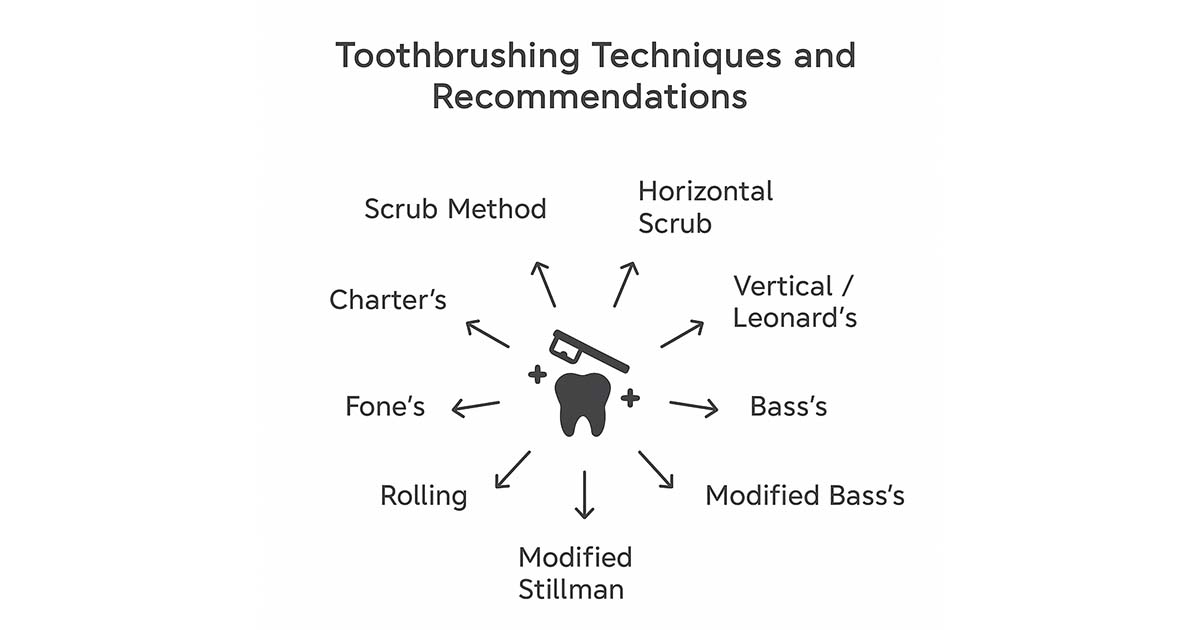
1. Horizontal Scrub Toothbrushing Technique
The toothbrushing motion in this technique involves moving the brush over the teeth in a back-and-forth manner. The bristles of the brush are often rested on the cervical region or on the occlusal surface and used in a scrubbing motion. Continued use over the years can lead to cervical abrasion and hypersensitivity in patients. It is not a recommended method of tooth cleaning; however, many uneducated patients still follow this technique.
One appropriate application of this method is for patients with orthodontic brackets—specifically, using the horizontal scrub on the labial surfaces to clean both above and below the brackets. Following this, a short vibratory action can be applied on the upper, lower, and subgingival sulcus areas, tooth by tooth, for more effective plaque removal.
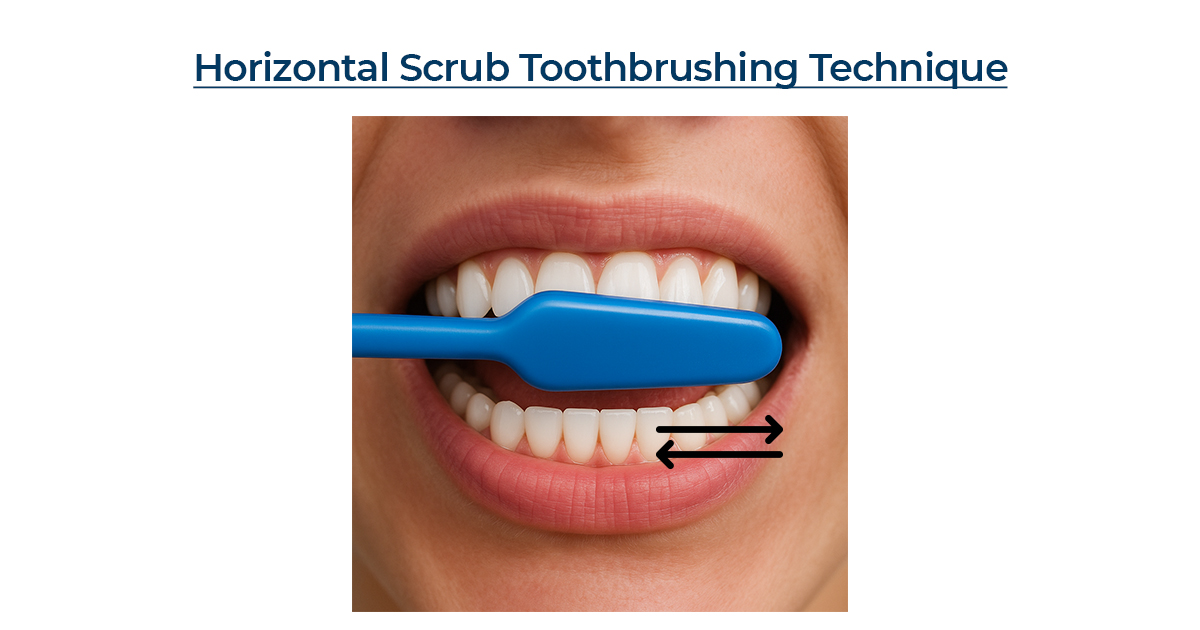
2. Vertical or Leonard’s Toothbrushing Technique
Leonard suggested that vertical strokes should be used to clean the maxillary and mandibular teeth separately. The bristles of the toothbrush are placed at a 90-degree angle to the facial surface or the long axis of the teeth. A vigorous up-and-down brushing motion is used, with just a slight circular movement after contacting the gingival surface, applying enough pressure. This technique does not effectively clean the interdental areas and therefore should not be recommended for adult patients.
Recommended for: Small children with deciduous teeth.
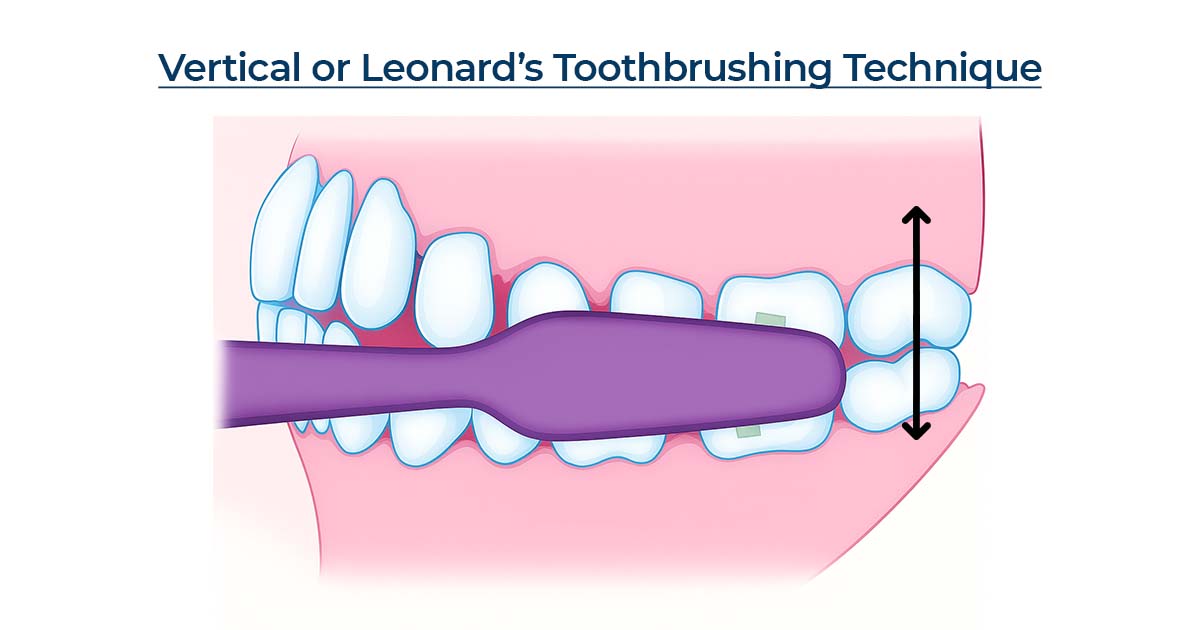
3. Bass’s Toothbrushing Technique
This is one of the best methods to recommend to your patients. A soft-bristled toothbrush should be used and placed at a 45-degree angle to the gingiva, moving in small circular motions. About three teeth of a quadrant should be covered at a time. On the lingual aspect of the anterior teeth, the brush is inserted vertically, with the heel of the brush pressed into the gingival sulci and proximal surfaces at a 45-degree angle while cleaning the teeth. The occlusal surface is cleansed by pressing the brush firmly against the pits and fissures and cleaning them by manually vibrating the bristles. It is an easy-to-learn method that effectively removes plaque and provides good gingival stimulation.
Recommended for: Routine patients, with or without periodontal involvement.

4. Modified Bass’s Toothbrushing Techniques
This method combines the vibratory and circular movements of the Bass technique with the sweeping motion of the rolling technique. The toothbrush is held at a 45-degree angle to the gingiva, and the bristles are gently vibrated by moving the brush handle in a back-and-forth motion. The bristles are then swept over the sides of the teeth toward their occlusal surfaces in a single motion. This technique provides excellent sulcus cleaning, effective interproximal and gingival cleaning, along with good gingival stimulation. One disadvantage is that it requires wrist dexterity.
Recommended for: Routine oral hygiene toothbrushing or for patients requiring improved intrasulcular cleansing.
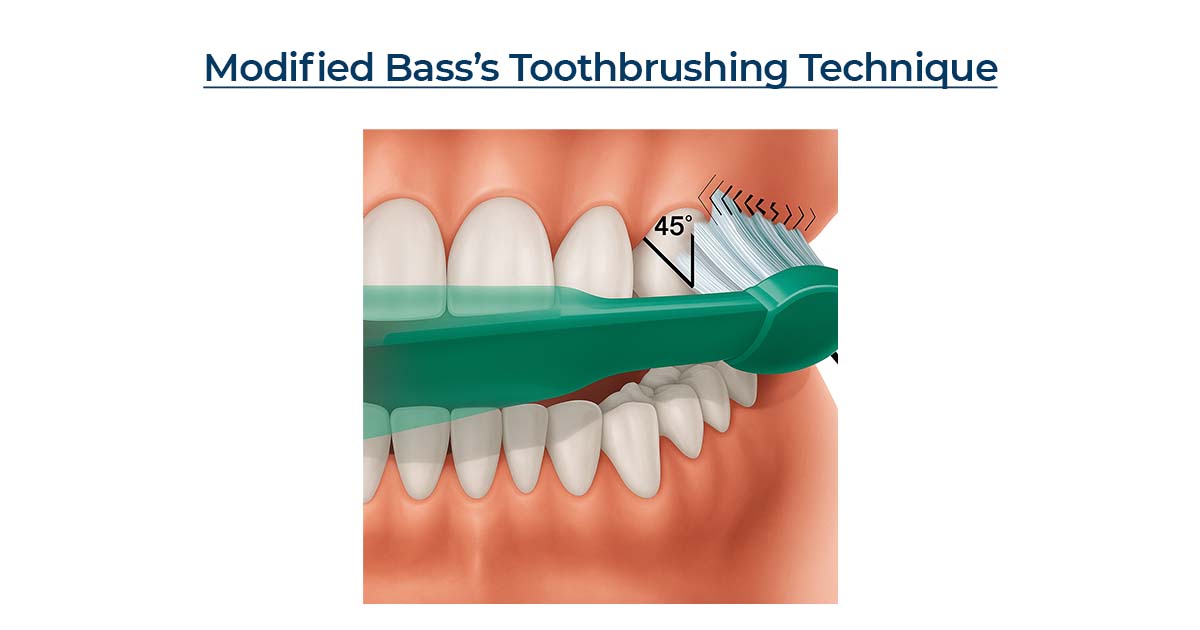
5. Modified Stillman Technique
A soft-bristled brush is used in this technique as well. The bristles are pointed apically at an oblique angle to the long axis of the tooth. They are positioned partly on the cervical aspect of the teeth and partly on the adjacent gingiva. The bristles are activated using short back-and-forth motions while simultaneously moving in a coronal direction. This is a time-consuming and technique-sensitive method—if not performed correctly, it may damage the epithelial attachment.
Recommended for:
a. Plaque removal from cervical areas below the height of contour of the enamel and from exposed proximal surfaces
b. General application for cleaning tooth surfaces and massaging the gingiva
c. cleaning areas with progressing gingival recession and root exposure to prevent abrasive tissue destruction
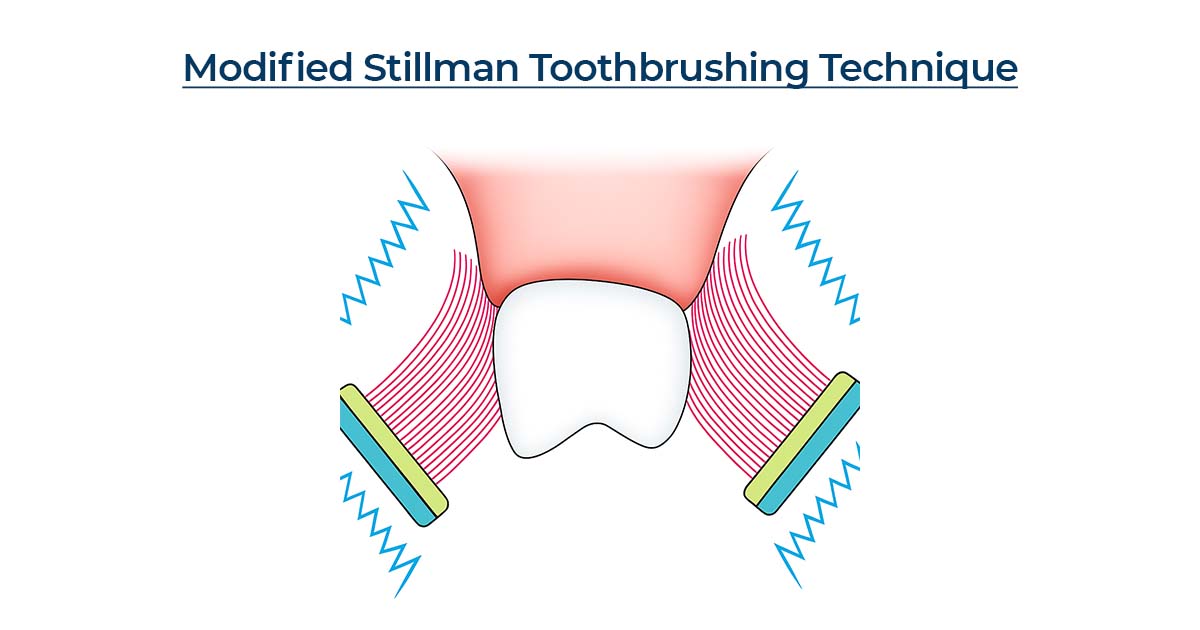
6. Rolling Toothbrushing Techniques
The rolling method of toothbrushing is another common technique for cleaning teeth. It requires sweeping the toothbrush over the tooth surface in an up-to-down motion using a rolling movement of the hand and wrist for the upper teeth, and a down-to-up motion for the lower teeth. The brush should also sweep from inside to outside and move horizontally in a back-and-forth direction on the occlusal surfaces of posterior teeth, both upper and lower.
Recommended for:
- Children over the age of 7
- Lingual surfaces in patients with fixed orthodontic appliances
- Patients with hypersensitive dentine and cervical abrasion, where the rolling technique should be carefully taught
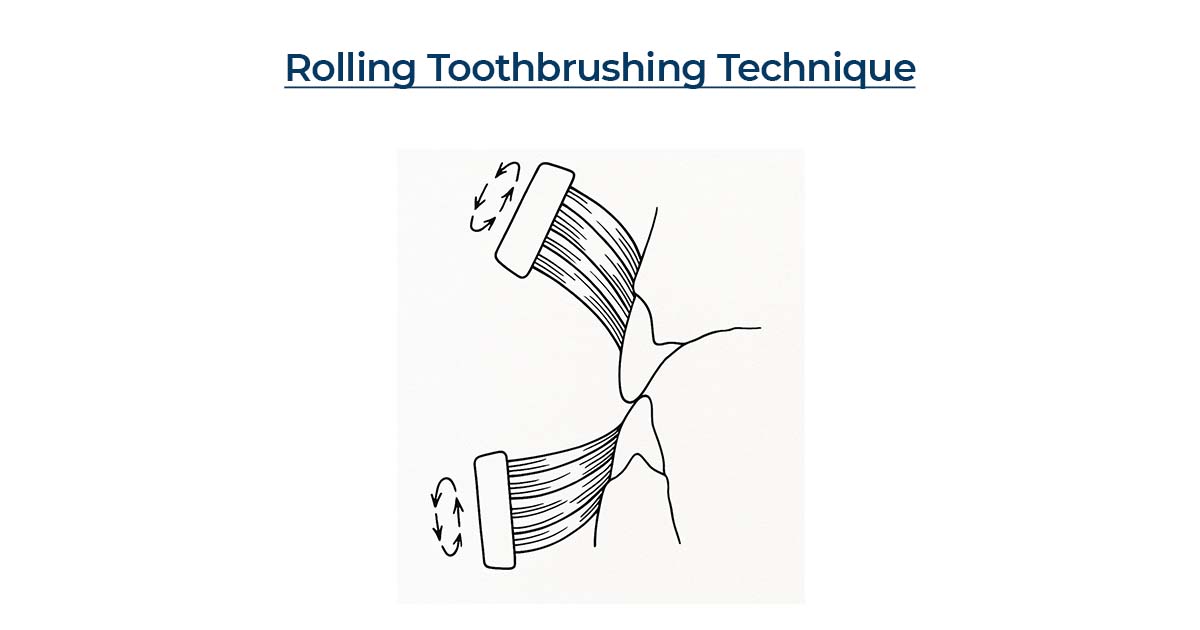
7.Fone’s Toothbrushing Techniques
This technique is designed for children and is presented as a fun activity to encourage daily oral hygiene. The child is first asked to open both arms and make large circular motions in the air. These circles are gradually reduced in size until very small circles are made in front of the mouth. The child is then taught to make similar circular motions with the toothbrush, ensuring that both teeth and gums are covered during cleaning. However, if not assisted or supervised properly by parents, it can lead to trauma to the gingiva. Additionally, this technique does not adequately clean the interdental areas and is therefore not recommended for adults.
Recommended for:
- Young children
- Physically or emotionally handicapped individuals
- Patients who lack manual dexterity
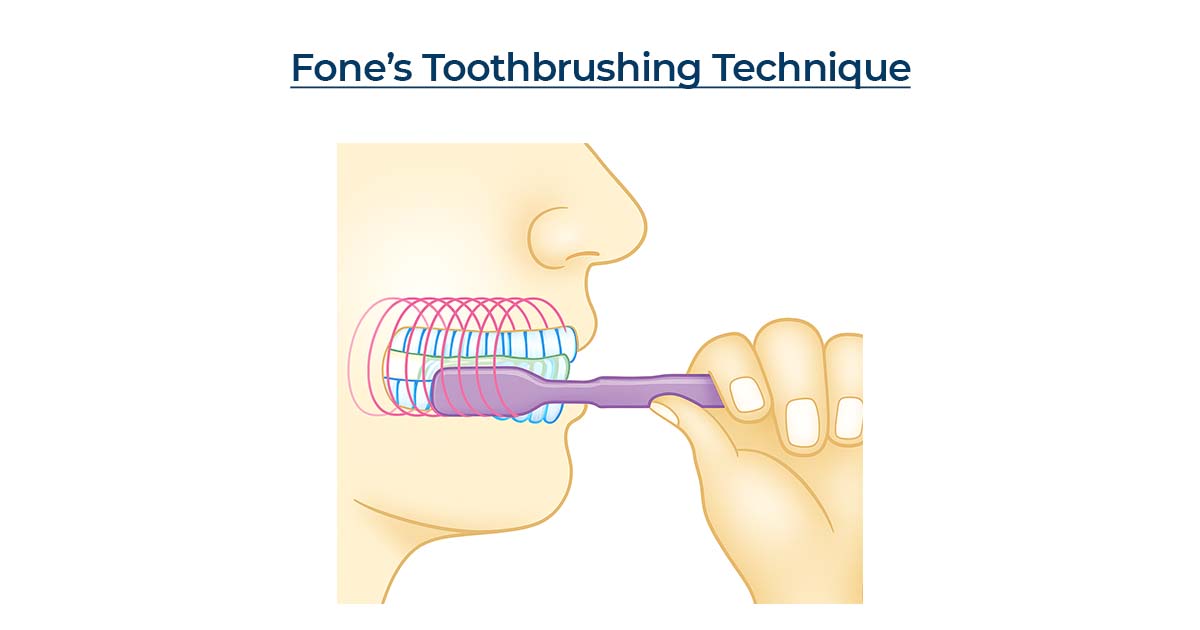
8. Charter’s Toothbrushing Techniques
In this method, a soft or medium-tufted toothbrush is placed at a 45-degree angle to the gingiva, with the bristles directed coronally. The bristles are activated using mild vibratory strokes, with the bristle ends positioned interproximal. This technique aids in massaging and stimulating the marginal and interdental gingiva. However, it does not allow the bristles to engage the gingival sulcus, limiting the removal of subgingival bacterial accumulations. Additionally, correct brush placement can be limited or even impossible in certain areas and may require modifications.
Recommended for:
a. Individuals with open interdental spaces, missing papillae, and exposed root surfaces
b. Patients wearing fixed partial dentures or orthodontic appliances
c. Post-periodontal surgery patients
d. Patients with moderate interproximal gingival recession
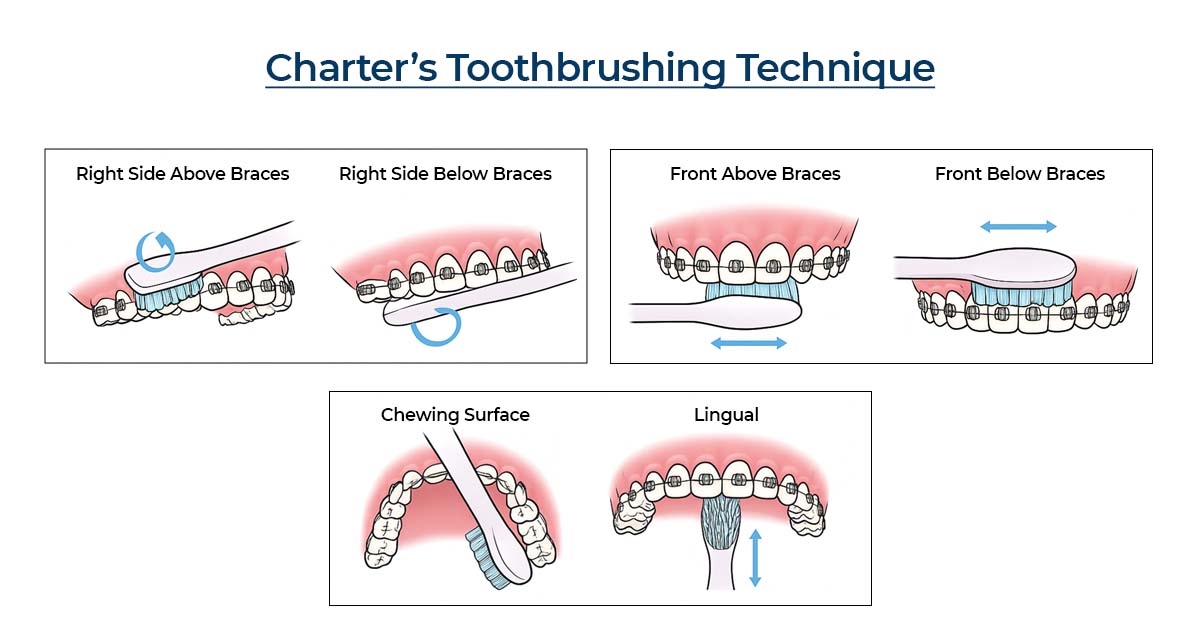
9. Scrub Toothbrushing Method
This method involves vigorous horizontal, vertical, and circular brushing motions. It is essentially a free-style method of brushing commonly observed in many patients. However, it is not a recommended technique, as it often leads to tooth abrasion and gingival recession.
| Technique | Recommended For |
|---|---|
| 1. Horizontal Scrub Technique | – Not generally recommended (leads to abrasion and sensitivity with long-term use) – Can be selectively used in orthodontic patients to clean above and below brackets on labial surfaces, followed by vibratory action for subgingival cleansing |
| 2. Vertical / Leonard’s Technique | – Small children with deciduous teeth |
| 3. Bass’s Technique | – Routine patients – Patients with or without periodontal involvement |
| 4. Modified Bass’s Technique | – Routine oral hygiene care – Patients requiring improved intrasulcular cleansing |
| 5. Modified Stillman Technique | – Plaque removal from cervical and proximal surfaces – Gingival massage – Patients with gingival recession and root exposure |
| 6. Rolling Technique | – Children over 7 years – Lingual surfaces in fixed orthodontic patients – Patients with hypersensitive dentine and cervical abrasion |
| 7. Fone’s Technique | – Young children – Physically or emotionally handicapped individuals – Patients lacking manual dexterity |
| 8. Charter’s Technique | – Patients with open interdental spaces and exposed root surfaces – Patients with fixed partial dentures or orthodontic appliances – Post-periodontal surgery patients – Patients with moderate interproximal gingival recession |
| 9. Scrub Method | – Not recommended (causes abrasion and gingival recession) |
Choosing the right toothbrushing technique is key to effective plaque removal and maintaining healthy gums. Every patient’s needs are different, so recommending the appropriate method can make a significant difference in their oral health. At Dentalkart, we provide a wide selection of quality toothbrushes, interdental brushes, flosses, and other oral care products to help you support your patients in adopting the best brushing habits. Help your patients achieve a healthier smile every day with the right guidance and products.
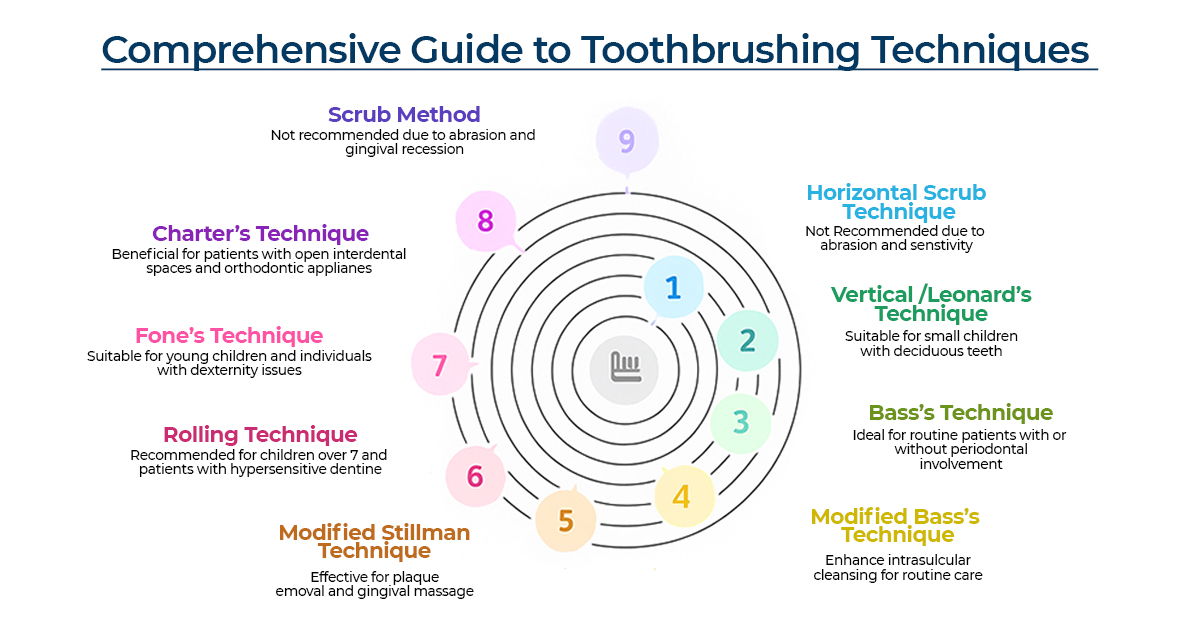
Frequently Asked Questions:
The Modified Bass technique is widely recommended. It combines vibratory and circular motions with a 45-degree angle to the gingiva, ensuring effective plaque removal and sulcus cleaning.
The Bass technique focuses on small circular motions at a 45-degree angle to the gingiva, cleaning the sulcus and interproximal areas. The Stillman technique also uses a 45-degree angle but combines back-and-forth motions to target the cervical region, promoting gingival massage.
The Leonard technique involves vertical strokes with the brush placed at a 90-degree angle to the teeth. It’s ideal for small children with deciduous teeth but not suitable for adults due to poor interdental cleaning.

No Comment